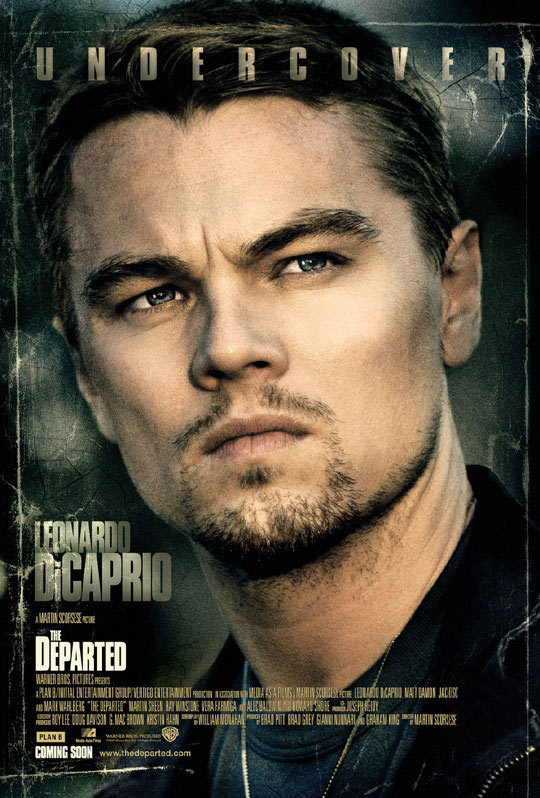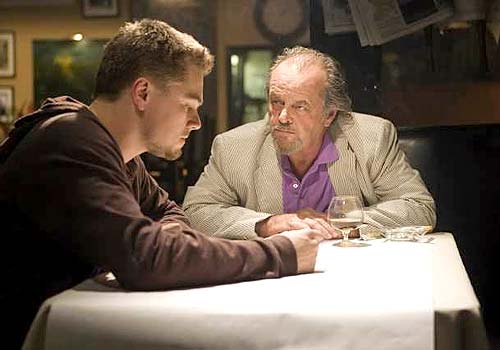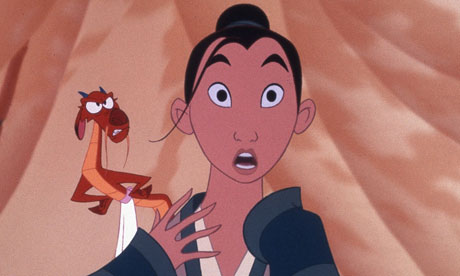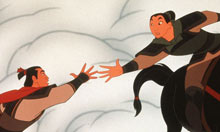The Incredible Hulk
Rebooting a blockbuster franchise that never got off the ground in the first place may not seem like the smartest move, but there is a certain brute logic to it: Scrutinizing the bomb in question can offer up 100 mistakes from which to learn. In the case of Ang Lee's 2003 Hulk, those invaluable lessons include: Don't dramatize a Marvel comic book about a scowling humongous green
 |
|
man-monster by giving it a convoluted Freudian backstory austere enough to agonize Ingmar Bergman; don't strip your movie of all lightness, comedy, and low-down kicks; and don't have Nick Nolte, looking as disheveled as he did in his famous mug shot, show up to chew more scenery than the Hulk does. The Incredible Hulk, with a new director and cast, rectifies those glitches, and the reboot strategy has an added bonus as well. The audience, in all likelihood, will be so grateful not to see another joyless, inert, pea green dud that it may not mind that The Incredible Hulk is just a luridly reductive and violent B movie — one that clears a bar that hadn't been set very high.
The film gets all the arduous backstory stuff (lab experiment gone kerflooey, etc.) out of the way in the opening credits, then catches up with Bruce Banner (Edward Norton), the molecular-research scientist-turned-unwitting Hulk, as he hides out in the layered semi-slums of Brazil, doing his best to be his own anger-management counselor. As onscreen titles flash things like ''Days Without Incident: 157,'' Banner, who works incognito on a soft-drink assembly line, tries to keep down his pulse rate, which ticks into the danger zone of Hulk transformation at around 200. The metaphor couldn't be clearer. With all that gamma matter in his cells, he's like a drug addict in recovery, trying to keep that nuclear rage from shooting into his system.
Stan Lee, the Hulk's co-creator, has said that he came up with the character by crossbreeding Boris Karloff's Frankenstein monster with Dr. Jekyll and Mr. Hyde. The noble-freak poignance of Frankenstein mostly eludes this movie, but we certainly feel Banner's Jekyll-like torment. Norton looks buff here, but his skinny, bearded face still narrows into a nerd's skewed smile. His Banner hates being the Hulk — he's scared of that power, wants it out of his body. But the Army, led by Gen. Thaddeus ''Thunderbolt'' Ross (William Hurt), plans to harness the Hulk as a weapon, and to that end chases Banner all over the globe, finally confronting him when he pops up on the Culver University campus, where he once toiled and now hopes to find the cure for what ails him.
It's quite a showdown. The 2003 Hulk, in his rubbery resilience, was essentially a defensive creature (Lou Ferrigno, in the TV series, was even less threatening — the simian version of a '70s hair model), but the new Hulk is offensive in every way, with ugly vein-mottled skin and a way of ripping jeeps in half, then hurling the hunks of metal at helicopters, to create one of those righteous ''Kiss off!'' fireballs. He's a rampaging force — Godzilla as bodybuilder — and the director, Louis Leterrier (Transporter 2), stages the film for maximum destructive excitement. It's a big, dumb boys' bash, and in the first huge action set piece, when the Hulk does his smash-and-grab thing and the military holds him back by blasting him with some sort of atomic wind machine, you may for a few moments have that long-sought ''Whoa!'' sensation, the one that takes you back to the thrill of the original comics.
A scene like that almost makes up for the flat, logy dialogue between Norton and Liv Tyler as Betty Ross, his science-geek girlfriend. Or the fact that a comic-book movie that isn't weighed down by too much story isn't the same thing as a comic-book movie with a great story. Of all the famous superheroes, the Hulk, as film material, has a special limitation, which is that it's hard to empathize deeply with the pain of this unjolly green giant at the same time that we're cheering on his orgies of apocalyptic mayhem. There are a couple of amusing actors scattered around The Incredible Hulk: Tim Blake Nelson as a jabbery scientist who likes to watch the Hulk transform a little too much, and Tim Roth as a military man who turns himself into the Hulk's ultimate creature-feature nemesis. On that score, though, it might not have made a whole lot of difference had a less talented star than Edward Norton been cast in the lead. There's only so much that an actor can do when he's basically playing the straight man in Hulk vs. Predator. Rebooting a blockbuster franchise that never got off the ground in the first place may not seem like the smartest move, but there is a certain brute logic to it: Scrutinizing the bomb in question can offer up 100 mistakes from which to learn. In the case of Ang Lee's 2003 Hulk, those invaluable lessons include: Don't dramatize a Marvel comic book about a scowling humongous green man-monster by giving it a convoluted Freudian backstory austere enough to agonize Ingmar Bergman; don't strip your movie of all lightness, comedy, and low-down kicks; and don't have Nick Nolte, looking as disheveled as he did in his famous mug shot, show up to chew more scenery than the Hulk does. The Incredible Hulk, with a new director and cast, rectifies those glitches, and the reboot strategy has an added bonus as well. The audience, in all likelihood, will be so grateful not to see another joyless, inert, pea green dud that it may not mind that The Incredible Hulk is just a luridly reductive and violent B movie — one that clears a bar that hadn't been set very high.
The film gets all the arduous backstory stuff (lab experiment gone kerflooey, etc.) out of the way in the opening credits, then catches up with Bruce Banner (Edward Norton), the molecular-research scientist-turned-unwitting Hulk, as he hides out in the layered semi-slums of Brazil, doing his best to be his own anger-management counselor. As onscreen titles flash things like ''Days Without Incident: 157,'' Banner, who works incognito on a soft-drink assembly line, tries to keep down his pulse rate, which ticks into the danger zone of Hulk transformation at around 200. The metaphor couldn't be clearer. With all that gamma matter in his cells, he's like a drug addict in recovery, trying to keep that nuclear rage from shooting into his system.
Stan Lee, the Hulk's co-creator, has said that he came up with the character by crossbreeding Boris Karloff's Frankenstein monster with Dr. Jekyll and Mr. Hyde. The noble-freak poignance of Frankenstein mostly eludes this movie, but we certainly feel Banner's Jekyll-like torment. Norton looks buff here, but his skinny, bearded face still narrows into a nerd's skewed smile. His Banner hates being the Hulk — he's scared of that power, wants it out of his body. But the Army, led by Gen. Thaddeus ''Thunderbolt'' Ross (William Hurt), plans to harness the Hulk as a weapon, and to that end chases Banner all over the globe, finally confronting him when he pops up on the Culver University campus, where he once toiled and now hopes to find the cure for what ails him.
It's quite a showdown. The 2003 Hulk, in his rubbery resilience, was essentially a defensive creature (Lou Ferrigno, in the TV series, was even less threatening — the simian version of a '70s hair model), but the new Hulk is offensive in every way, with ugly vein-mottled skin and a way of ripping jeeps in half, then hurling the hunks of metal at helicopters, to create one of those righteous ''Kiss off!'' fireballs. He's a rampaging force — Godzilla as bodybuilder — and the director, Louis Leterrier (Transporter 2), stages the film for maximum destructive excitement. It's a big, dumb boys' bash, and in the first huge action set piece, when the Hulk does his smash-and-grab thing and the military holds him back by blasting him with some sort of atomic wind machine, you may for a few moments have that long-sought ''Whoa!'' sensation, the one that takes you back to the thrill of the original comics.

A scene like that almost makes up for the flat, logy dialogue between Norton and Liv Tyler as Betty Ross, his science-geek girlfriend. Or the fact that a comic-book movie that isn't weighed down by too much story isn't the same thing as a comic-book movie with a great story. Of all the famous superheroes, the Hulk, as film material, has a special limitation, which is that it's hard to empathize deeply with the pain of this unjolly green giant at the same time that we're cheering on his orgies of apocalyptic mayhem. There are a couple of amusing actors scattered around The Incredible Hulk: Tim Blake Nelson as a jabbery scientist who likes to watch the Hulk transform a little too much, and Tim Roth as a military man who turns himself into the Hulk's ultimate creature-feature nemesis. On that score, though, it might not have made a whole lot of difference had a less talented star than Edward Norton been cast in the lead. There's only so much that an actor can do when he's basically playing the straight man in Hulk vs. Predator.




































